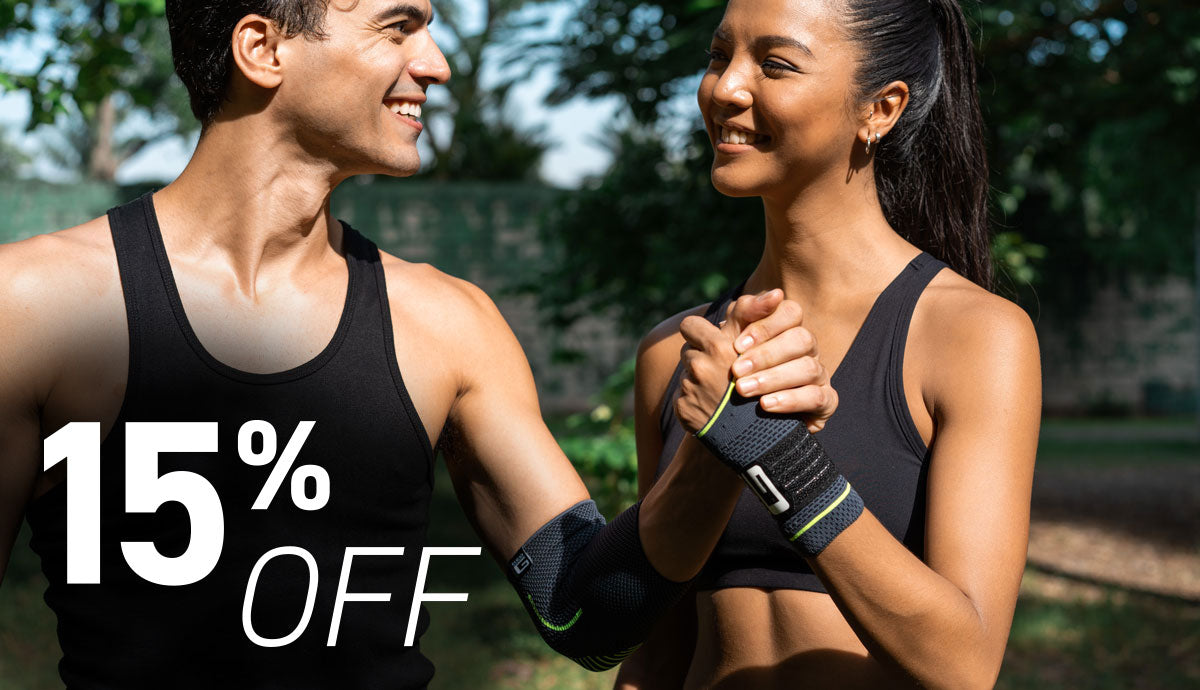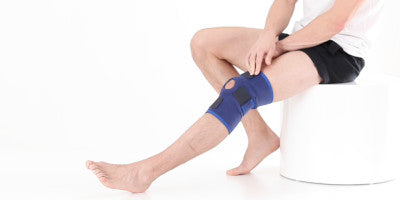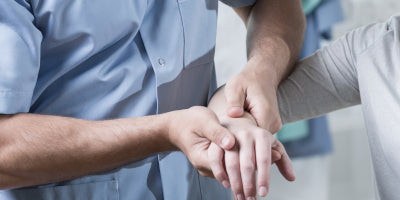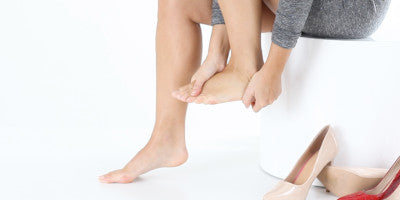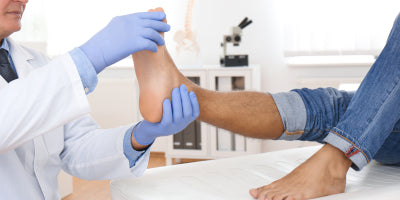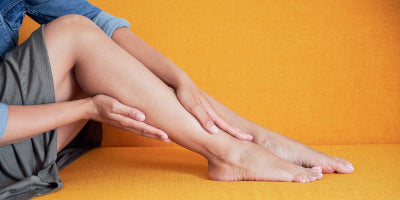The New PEACE & LOVE Principle
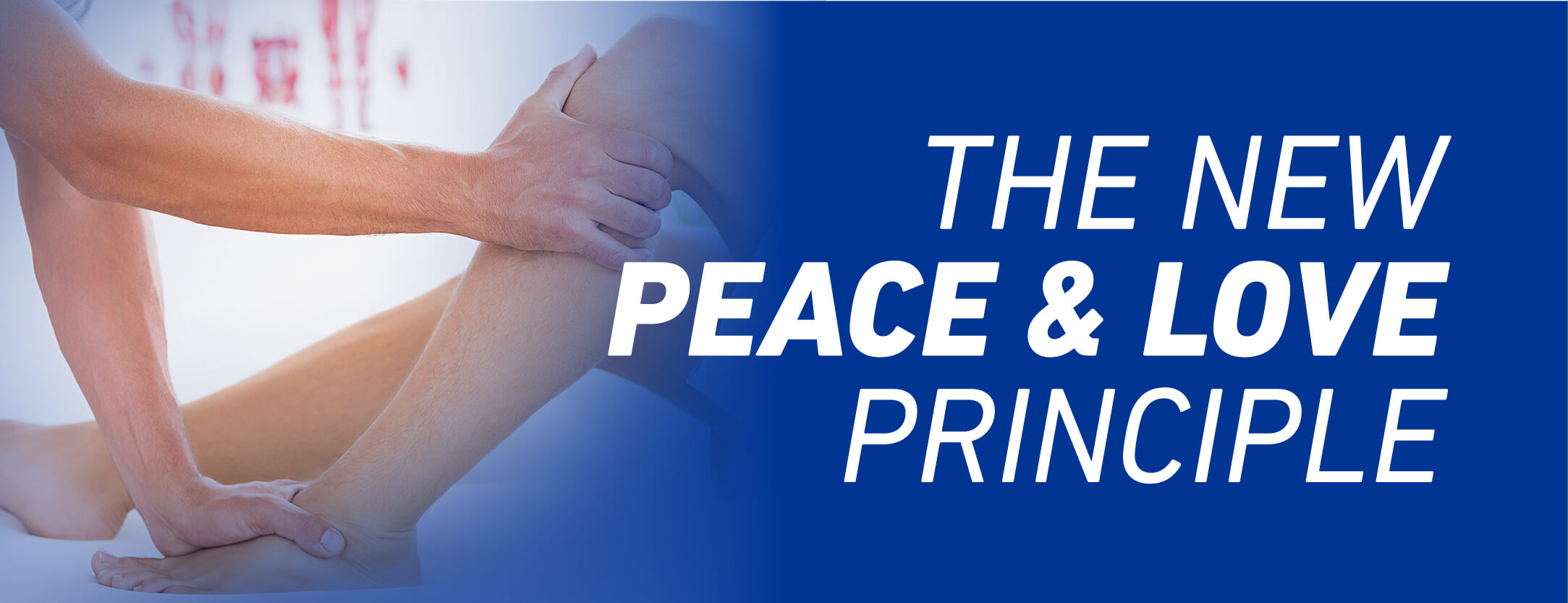
Previously, the PRICE principle was offered as advice to treat injuries immediately after their occurrence. Protection, Rest, Ice Compression and Elevation were the steps widely known for treatment of soft tissue injuries. However, the British Journal of Sports Medicine now suggests that the PRICE principle focusses “on acute management, unfortunately ignoring subacute and chronic stages of tissue healing.”[1]. To that end, they now suggest the use of their new principle, PEACE & LOVE. PEACE (Protection, Elevation, Avoid Anti-Inflammatories, Compression & Education), is for the acute stages of soft tissue injury management. Following that, LOVE (Load, Optimism, Vascularisation & Exercise), is needed after the first days have passed.
Here's how PEACE & LOVE is broken down by Blaise Dubois and Jean-Francois Esculier in their own words[1]:

Immediately after injury, do no harm and let PEACE guide your approach.
P : Protect
Unload or restrict movement for 1–3 days to minimise bleeding, prevent distension of injured fibres and reduce the risk of aggravating the injury. Rest should be minimised as prolonged rest can compromise tissue strength and quality. Pain signals should guide the cessation of protection.
E : Elevate
Elevate the limb higher than the heart to promote interstitial fluid flow out of tissues. Despite weak evidence supporting its use, elevation shows a low risk-to-benefit ratio.
A : Avoid Anti-Inflammatory Modalities
The various phases of inflammation help repair damaged soft tissues. Thus, inhibiting inflammation using medications may negatively affect long-term tissue healing, especially when higher dosages are used.2 Standard of care for soft-tissue injuries should not include anti-inflammatory medications.
C : Compress
External mechanical pressure using taping or bandages helps limit intra-articular oedema and tissue haemorrhage. Despite conflicting studies, compression after an ankle sprain seems to reduce swelling and improve quality of life.
E : Educate
Therapists should educate patients on the benefits of an active approach to recovery. Passive modalities, such as electrotherapy, manual therapy or acupuncture, early after injury have insignificant effects on pain and function compared with an active approach, and may even be counterproductive in the long term. Better education on the condition and load management will help avoid overtreatment. This in turn reduces the likelihood of unnecessary injections or surgery, and supports a reduction in the cost of healthcare (eg, due to disability compensation associated with low back pain). In an era of hi-tech therapeutic options, we strongly advocate for setting realistic expectations with patients about recovery times instead of chasing the ‘magic cure’ approach.
After the first days have passed, soft tissues need LOVE.
L : Load
An active approach with movement and exercise benefits most patients with musculoskeletal disorders. Mechanical stress should be added early and normal activities resumed as soon as symptoms allow. Optimal loading without exacerbating pain promotes repair, remodelling and builds tissue tolerance and the capacity of tendons, muscles and ligaments through mechanotransduction.
O : Optimism
Optimistic patient expectations are associated with better outcomes and prognosis. Psychological factors such as catastrophisation, depression and fear can represent barriers to recovery. Beliefs and emotions are thought to explain more of the variation in symptoms following an ankle sprain than the degree of pathophysiology.
V : Vascularisation
Cardiovascular activity represents a cornerstone in the management of musculoskeletal injuries. While research is needed on dosage, pain-free aerobic exercise should be started a few days after injury to boost motivation and increase blood flow to the injured structures. Early mobilisation and aerobic exercise improve physical function, supporting return to work and reduce the need for pain medication in individuals with musculoskeletal conditions.
E : Exercise
There is a strong level of evidence supporting the use of exercise for the treatment of ankle sprains and for reducing the prevalence of recurrent injuries. Exercises help to restore mobility, strength and proprioception early after injury. Pain should be avoided to ensure optimal repair during the subacute phase of recovery, and should be used as a guide for exercise progressions.
Reference
[1] https://bjsm.bmj.com/content/bjsports/54/2/72.full.pdf
